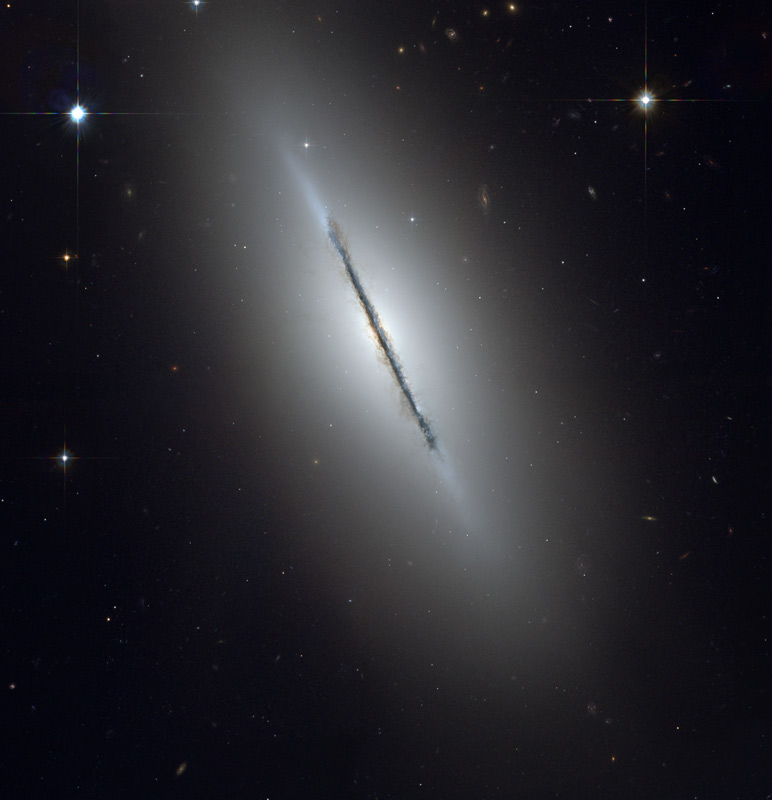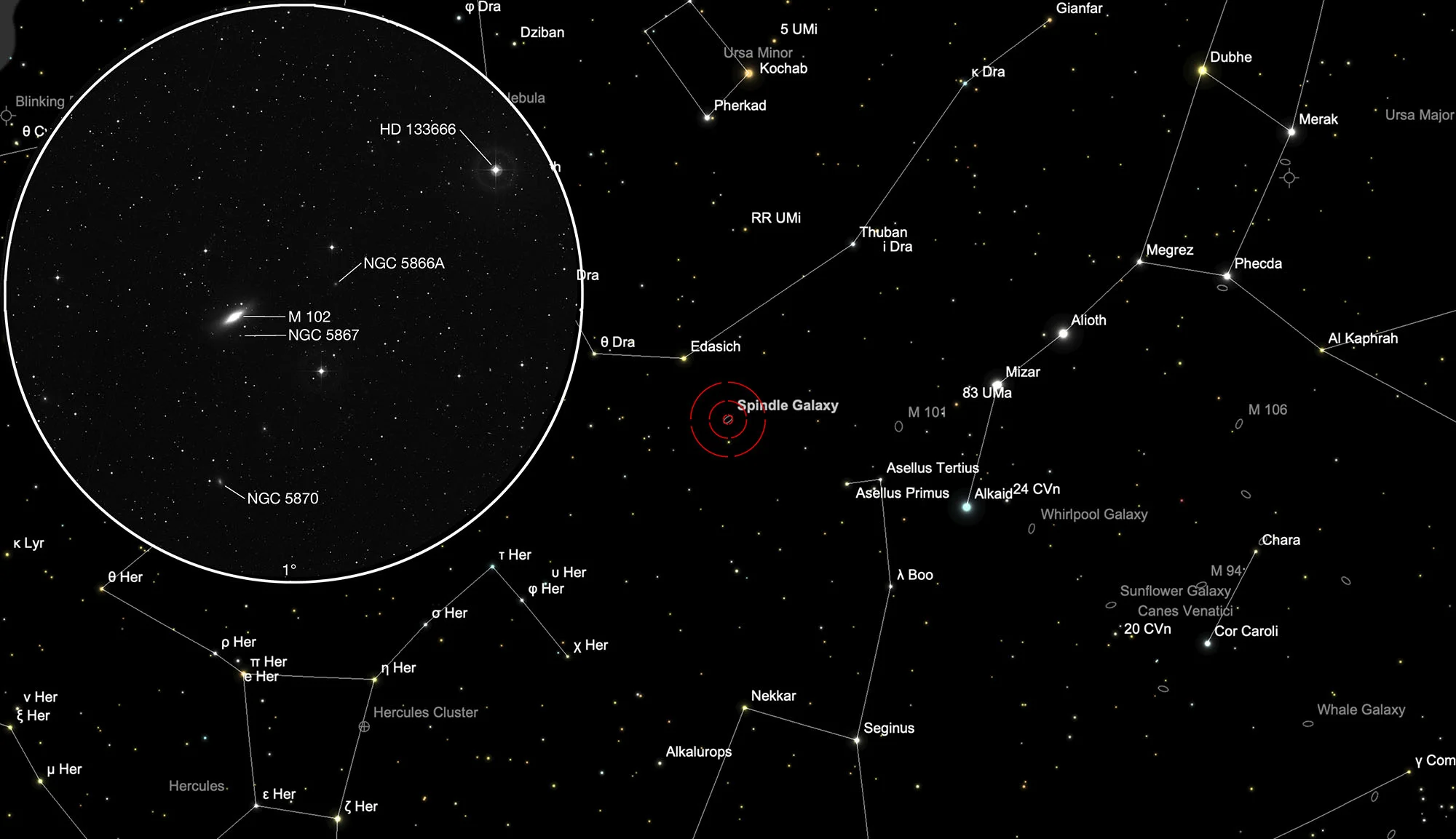Spindle galaxy (Messier 102)

History
M 102 was discovered by Pierre Méchain on 27 March 1781 and added to his catalog by Charles Messier. Since the deadline for publication in the «Connoissance» was close to 1784, he had no time to verify the observation as usual. Messier attributed. No. 102: «Nebula between the stars ο in the boat and ι of the dragon: it is very faint, next to it is a star of the sixth magnitude.» [281]
However, the position recorded for M 102 does not correspond to any object that Messier or Méchain could have seen. In a letter dated 6 May 1783, Méchain rejected the discovery and assumed it was merely a renewed observation of M 101. For this reason it was generally assumed for more than 200 years that M 101 and M 102 were the same object, namely the galaxy NGC 5457. The stars ο Boötis and ι Draconis mentioned in the description are 42° apart and therefore not suitable for a position determination. If one assumes that ο Boötis was a misprint should actually be called θ Boötis, this is only 11° away from ι Draconis. In between there are a number of galaxies, only NGC 5866 with 9.8 mag is bright enough that it could have been seen with the telescopes of Méchain and Messier. This was suggested by Camille Flammarion in 1917. [196]
Physical Properties
On Simbad, M 102 is assigned to the galaxy NGC 5866, at NED you land at M 101. M 102 is a lenticular galaxy classified as SA0^+ according to de Vaucouleur. We see them directly from the edge on the central dust band. Heliocentric velocities measurements over the past 20 years range from 672 km/s to 728 km/s and distances from 13 Mpc to 15 Mpc (42 to 49 million light years). The diameter is estimated to be about 70'000 light years and the mass to one trillion solar masses. [145, 196]
| Name | RA | Dec | Type | bMag | vMag | B-V | SB | Dim | PA | z | D(z) | MD | Dreyer Description | Identification, Remarks |
|---|---|---|---|---|---|---|---|---|---|---|---|---|---|---|
| NGC 5866 | 15 06 29.4 | +55 45 49 | Gx (S0-a) | 10.7 | 9.9 | 0.8 | 12.2 | 6.5 × 3.1 | 128 | 0.002242 | 9.47 | 14.680 | vB, cL, pmE 146°, gbM | WH I 215; h 1909; GC 4058; M 102; UGC 9723; MCG 9-25-17; CGCG 274-16; IRAS 15051+5557 |
| NGC 5866 A | 15 05 16.1 | +55 49 39 | Gx (E0) | 16.5 | 15.5 | 1.0 | 14.1 | 0.5 × 0.5 | 0.001950 | 8.24 | vB, cL, pmE 146°, gbM | WH I 215; h 1909; GC 4058; Keeler 690 | ||
| NGC 5866 B | 15 12 07.2 | +55 47 07 | Gx (SBd) | 15.2 | 14.6 | 0.6 | 16.2 | 2.7 × 1.9 | 20 | 0.002805 | 11.85 | 17.700 | vB, cL, pmE 146°, gbM | WH I 215; h 1909; GC 4058; UGC 9769; MCG 9-25-34; CGCG 274-33; KUG 1510+559 |
| NGC 5867 | 15 06 24.3 | +55 43 54 | Gx (C) | 16.5 | 15.5 | 1.0 | 11.9 | 0.2 × 0.2 | 0.041637 | 175.8 | eF, vS, stellar | GC 4059 | ||
| NGC 5870 | 15 06 33.7 | +55 28 45 | dup | 15.4 | 14.4 | 1.0 | 14.4 | 1.2 × 0.9 | 25 | 0.002746 | 11.60 | eF, pS, lE, v diffic, * f | NGC 5826; UGC 9725; MCG 9-25-16; CGCG 274-17; IRAS 15053+5540 |
Finder Chart
The galaxy M 102 is located in the constellation Draco between the stars Edasich (ι Draconis) and Asellus Primus (θ Boötis), about 4° from (ι Draconis. About 1° south of M 102 is the 5.2 mag bright one Star HR 5636, which is still visible to the eye on a clear night The galaxy is circumpolar and is highest in the sky at night from January to October.
